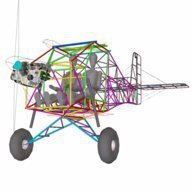-
Posts
1,842 -
Joined
-
Last visited
-
Days Won
42

Head in the clouds replied to a topic in AUS/NZ General Discussion

Head in the clouds replied to challenger_i's topic in AUS/NZ General Discussion

Head in the clouds replied to challenger_i's topic in AUS/NZ General Discussion

Head in the clouds replied to bexrbetter's topic in Aircraft Building and Design Discussion

Head in the clouds replied to fly_tornado's topic in Aircraft Incidents and Accidents

Head in the clouds replied to fly_tornado's topic in Aircraft Incidents and Accidents

Head in the clouds replied to Jaba-who's topic in Instruments, Radios and Electronics

Head in the clouds replied to danny_galaga's topic in Aircraft General Discussion

Head in the clouds replied to Birdseye's topic in Aircraft Incidents and Accidents

